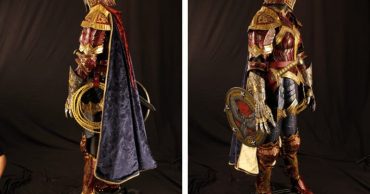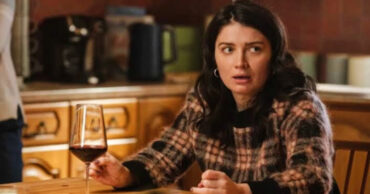For over a century, the character of Peter Rabbit has stayed relevant, even in today’s pop culture. Having been patented as a stuffed toy in 1903, Peter Rabbit is the oldest licensed character. The fictional animal character was created by English author Beatrix Potter in a series of published children’s stories.
Peter Rabbit is a young, adventurous, anthropomorphic rabbit whose mischievousness and disobedience often lead to trouble. Peter Rabbit is distinguished from the other Beatrix Potter rabbits with his brass-buttoned blue jacket. Here’s a look at the century-old Peter Rabbit character and its effect on popular culture.
Peter Rabbit in Beatrix Potter’s Original Books
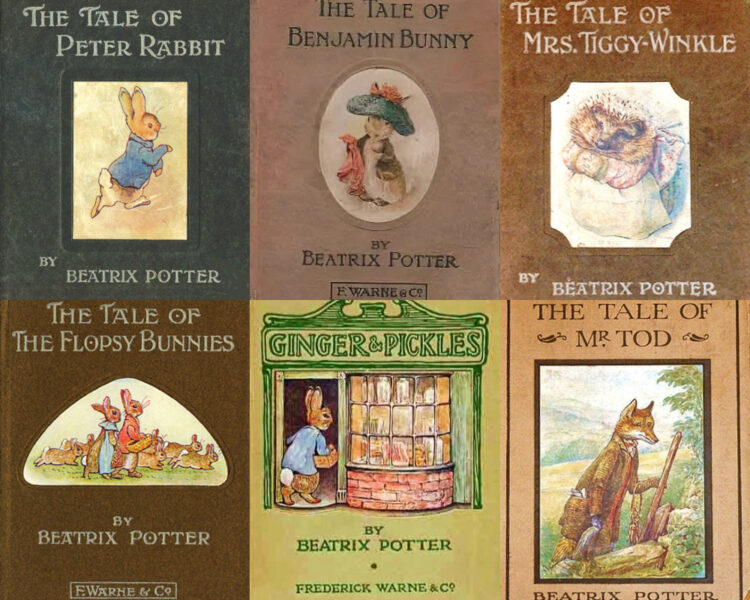
The Peter Rabbit books are Beatrix Potter’s highest-selling books of her collection. Potter’s books featuring Peter Rabbit reportedly sold over 150 million copies worldwide. Although listed amongst the top 20 best-selling book series worldwide, it’s important to note it is one of the book series with the least number of books in it. Only six of Beatrix Potter’s books feature the Peter Rabbit character.
The first published book featuring Peter Rabbit was the 1902 children’s book The Tale of Peter Rabbit. However, the character was first created in 1893, when Beatrix Potter wrote stories with the character for five-year-old Noel Moore. The boy, the son of Annie Carter Moore, Potter’s former governess, had been sick at the time. With over 45 million copies sold, The Tale of Peter Rabbit is one of the best-selling books in history.
A sequel, The Tale of Benjamin Bunny, was published in 1904. Like the first, the book had Peter Rabbit as its central character. However, Peter Rabbit only made a cameo in the 1905 The Tale of Mrs. Tiggy-Winkle. In 1909 The Tale of the Flopsy Bunnies, a grown-up Peter Rabbit also briefly appears. Peter Rabbit made another cameo appearance in the 1909 The Tale of Ginger and Pickles. His next and last appearance in the original Beatrix Potter books was the 1912 The Tale of Mr. Tod.
Peter Rabbit in Commissioned 21st Century Books
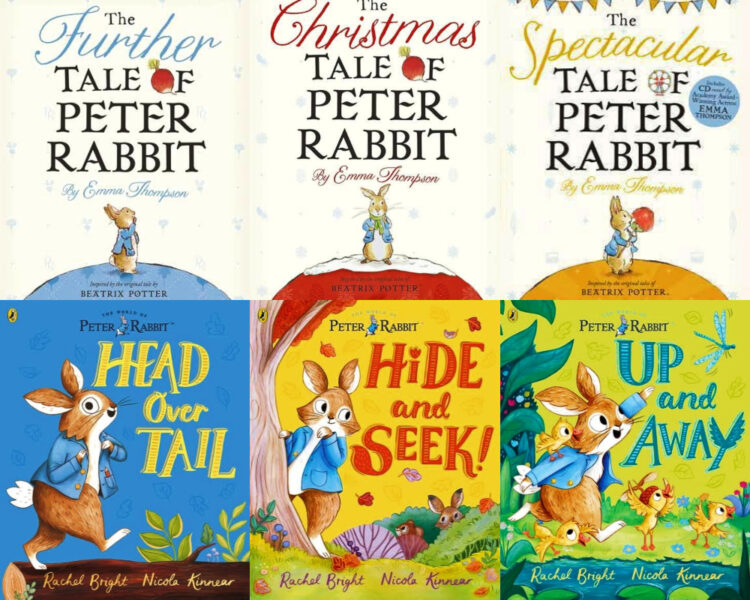
British publisher Frederick Warne & Co. published all six original Beatrix Potter’s Peter Rabbit books. Frederick Warne & Co. chose to mark the 110th anniversary of the first book by commissioning a writer to write a new series on Peter Rabbit. British actress Emma Thompson wrote a new book series on Peter Rabbit. The first of Thompson’s books, The Further Tale of Peter Rabbit, was published on September 18, 2012. Two other books were published as sequels. These include The Christmas Tale of Peter Rabbit and The Spectacular Tale of Peter Rabbit, published in 2013 and 2014, respectively.
In addition to Emma Thompson’s new Peter Rabbit book series, a reboot series was also published in the 2020s. English author and illustrator Rachel Bright was commissioned to work on the books, with Nicola Kinnear as its illustrator. Three Peter Rabbit books authored by Rachel Bright have since been released. They include Peter Rabbit Head Over Tail (released in 2021), Peter Rabbit Hide and Seek (2022), and Peter Rabbit Up and Away (2024).
Peter Rabbit in Present-Day Commemoration & Merchandising
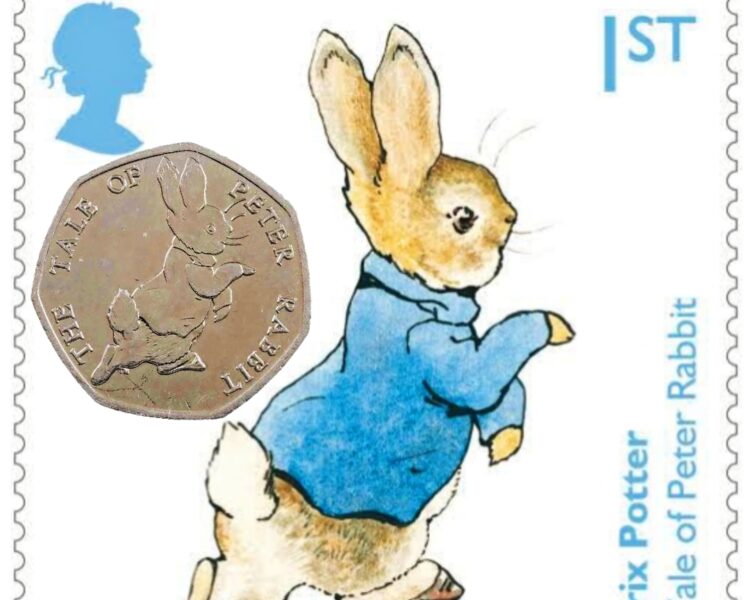
With the growing success of its first book, The Tale of Peter Rabbit, the Peter Rabbit character, manufactured as a soft doll, was patented/trademarked/licensed in 1903. In the early 1900s, there was an unprecedented rise in demand for the Peter Rabbit doll. Since 1910, London’s luxury department store Harrods has sold the doll. Across the world, Peter Rabbit is famous in Japan for its story and merchandise. Peter Rabbit’s story is so popular in Japan that it is estimated that about 80% of the country’s population is familiar with the character and/or story of Peter Rabbit.
However, it isn’t only halfway across the world that Peter Rabbit has received commemorations. In honor of Beatrix Potter, the Royal Mail (British postal service and courier company) celebrated Potter’s 150th birth anniversary. Beatrix Potter was born on July 28, 1866, and died on December 22, 1943, at age 77. To commemorate the event, in 2016, several of Beatrix Potter’s characters, including Peter Rabbit, appeared in a series of UK postage stamps. The character also appeared in a few collectors’ 50p British coins.
Peter Rabbit in Movies & TV Shows
Walt Disney was less than a year old when the first Peter Rabbit book was released in 1902. However, it likely was one of Disney’s childhood cartoon characters. After his success and dissatisfaction with cartoon shorts in 1934, Walt Disney looked to produce a feature-length movie. Before going on to produce his highly successful first feature-length movie, Snow White and the Seven Dwarfs, Walt Disney approached Beatrix Potter, expressing interest in making a feature-length Peter Rabbit film.
Although a smart and safe approach, especially because of Peter Rabbit’s popularity at the time, Beatrix Potter reportedly denied Disney the rights to the character. However, in 1971, almost 28 years after Beatrix Potter’s death, Peter Rabbit appeared in its first screen production in the ballet film The Tales of Beatrix Potter. When screenwriter and producer Richard Goodwin approached British publisher Frederick Warne, founder of Frederick Warne & Co., for rights to Peter Rabbit, like Walt Disney, he was turned down. However, with promises that Beatrix Potter’s original work and idea be preserved, Warne later agreed, with £5,000 reportedly paid for the rights.
Since then, Peter Rabbit has appeared in several other film and television productions. Peter Rabbit appeared on HBO’s 1991 Storybook Musical, adapted from Beatrix Potter’s first Peter Rabbit book, the 1992 BBC anthology series, The World of Peter Rabbit and Friends, and two other TV shows in 1995 and 1996. In the 21st century, in 2012, an animated TV series with the character’s name premiered on CBeebies and Nickelodeon. The most famous adaptation of the character for today’s generation of movie audiences has been the 2018 animated/live-action adaptation film Peter Rabbit and its 2021 sequel, Peter Rabbit 2: The Runaway. If the Peter Rabbit character felt nostalgic, these Cartoon Network shows may have also been a favorite.
 Follow Us
Follow Us
